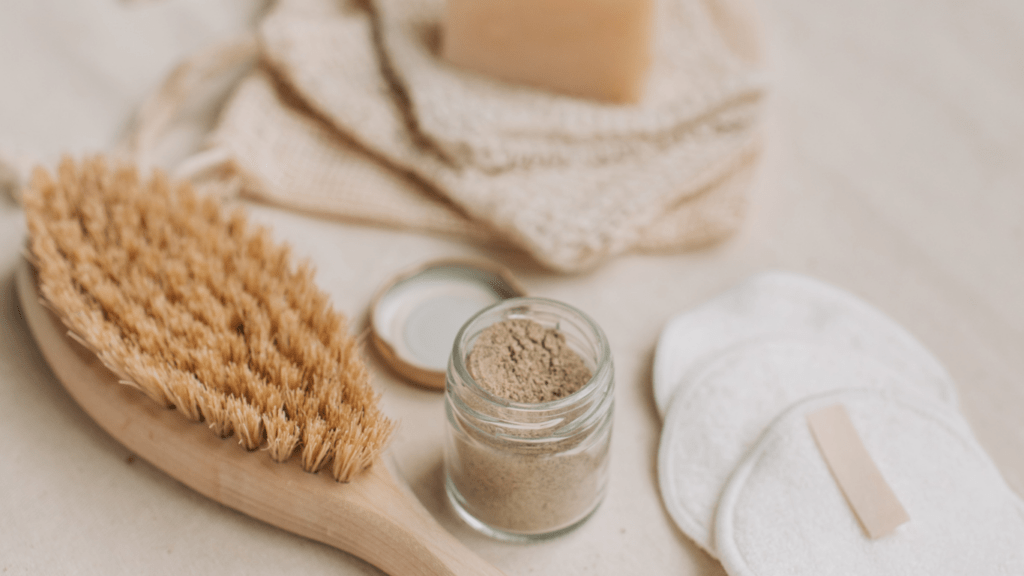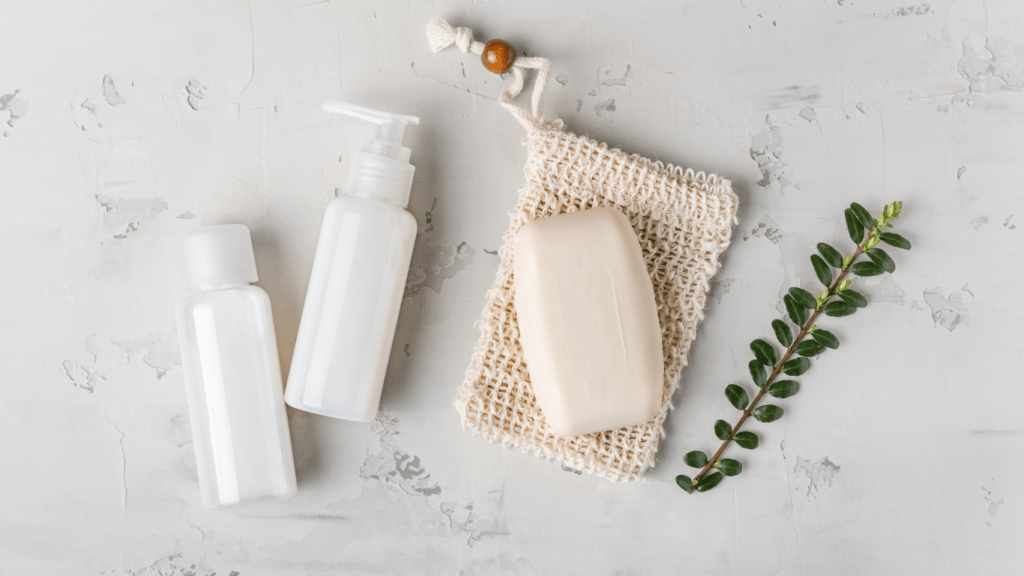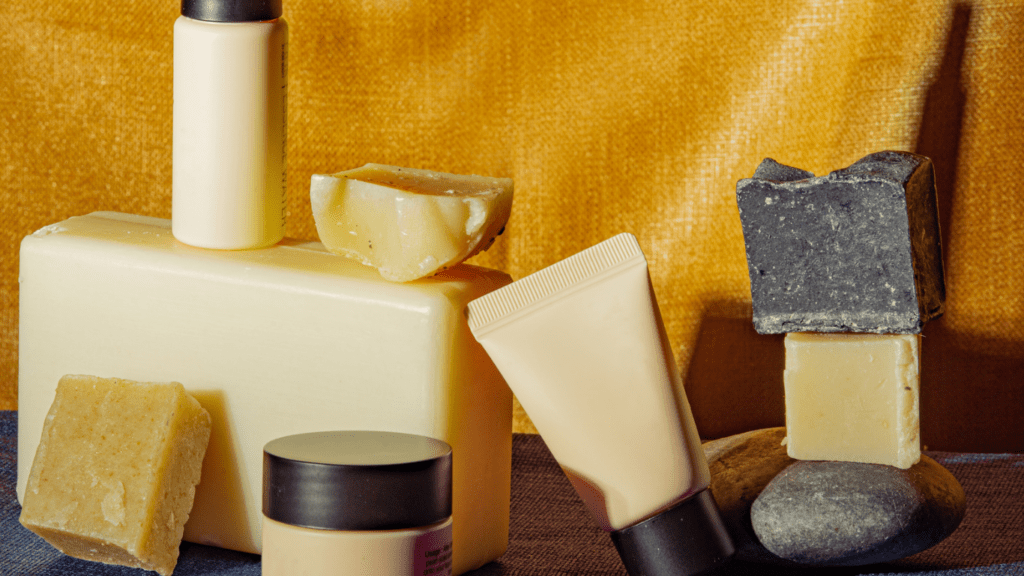Understanding Sustainable Beauty
Sustainable beauty revolves around creating products that consider environmental and ethical implications. Brands in this industry strive to minimize their impact on the planet.
Definition and Importance
Sustainable beauty refers to products produced with eco-friendly methods, using ethically sourced ingredients, and reducing waste. This approach is important as it addresses the environmental damage caused by conventional beauty products. The beauty industry generates significant waste, so adopting sustainable practices helps mitigate this problem. Brands focusing on sustainability prioritize long-term environmental health over short-term profits.
Key Elements
Several key elements define sustainable beauty:
- Ethically Sourced Ingredients: Brands use natural, organic, and non-toxic ingredients. For example, they opt for plant-based oils instead of synthetic chemicals.
- Cruelty-Free Testing: Brands avoid animal testing, ensuring no harm comes to animals during product development.
- Minimalist Packaging: Companies employ recyclable, biodegradable, or reusable packaging. An example includes using glass jars instead of plastic containers.
- Sustainable Production Practices: Brands focus on energy-efficient manufacturing processes and sourcing renewable energy. Some brands also offset their carbon emissions.
- Social Responsibility: Companies engage in fair trade practices and support communities from where they source ingredients.
These elements embody sustainable beauty, guiding brands toward eco-conscious choices and promoting a healthier planet.
Leading Brands in Sustainable Beauty

Several brands are pioneering sustainable beauty by adopting green practices across their operations. These companies stand out through their innovative approaches to eco-friendliness, ethical standards, and sustainable packaging.
Brand 1: Innovative Practices
One notable brand harnesses advanced, eco-friendly practices to reduce their carbon footprint. They employ renewable energy in their manufacturing processes, use biodegradable formulas in their products, and streamline their supply chain to minimize waste. Examples include brands like Lush, which crafts fresh, handmade cosmetics without preservatives or synthetic ingredients. By focusing on sustainability at every production level, they ensure their products are low-impact and environmentally conscious.
Brand 2: Eco-Friendly Packaging
Another leading brand excels in developing eco-friendly packaging solutions. They use recyclable materials, reduce excess packaging, and adopt refillable containers to decrease waste. For instance, brands like Ethique manufacture beauty bars with compostable wrappers, eliminating the need for plastic bottles altogether. These strategies not only reduce environmental harm but also align with consumers’ growing preference for green packaging options.
Brand 3: Ethical Sourcing
Ethical sourcing forms the core of another prominent brand’s approach to sustainable beauty. They prioritize fair trade, support local communities, and ensure that their ingredients are responsibly harvested. Example brands like The Body Shop source raw materials from community trade programs, offering fair wages and safe working conditions to their suppliers. This commitment fosters social responsibility while delivering ethically-made products to consumers.
Ingredients That Matter
Choosing the right ingredients is crucial in sustainable beauty. Let’s delve into the significance of natural versus synthetic and the value of certified organic ingredients.
Natural vs. Synthetic
Natural ingredients come from plants, minerals, or animals. They are minimally processed. Examples include aloe vera, coconut oil, and jojoba oil. These ingredients are often biodegradable and less harmful to the environment. However, they may have a shorter shelf life and can be less stable.
Synthetic ingredients are chemically derived. They are often more stable and have a longer shelf life. Common synthetic substances include parabens, sulfates, and phthalates. While they can enhance product performance, some have potential environmental and health risks. It’s essential to scrutinize synthetic ingredients for their safety and environmental impact.
Certified Organic Ingredients
Certified organic ingredients meet strict agricultural and production standards. These standards prohibit synthetic pesticides and fertilizers. They also require sustainable farming practices. Examples of certified organic beauty components include organic shea butter, organic chamomile extract, and organic rosehip oil. These substances are often free from harmful chemicals and support biodiversity and soil health. Labels like USDA Organic or Ecocert ensure the authenticity of organic ingredients.
The ingredients chosen by sustainable beauty brands are pivotal in their green initiatives. Natural ingredients often offer environmental benefits, while certified organic ones ensure adherence to rigorous standards.
Packaging Innovations
Brands are putting significant effort into developing sustainable packaging solutions. They’ve focused on refillable options, biodegradable materials, and reducing plastic usage.
Refillable Options
Brands have embraced refillable packaging, which cuts waste by reusing existing containers. I notice that many beauty brands now offer refill stations for products like shampoos, lotions, and cosmetics. For instance, companies like Lush and The Body Shop provide refillable containers that customers refill in stores. This approach reduces waste and promotes a circular economy where resources get reused multiple times.
Biodegradable Materials
Brands are switching to biodegradable materials to minimize environmental impact. I see that they increasingly use materials like cornstarch, bamboo, and mycelium in their packaging. For example, Seed Phytonutrients utilizes paper bottles made from post-consumer recycled paper that biodegrades after use. By adopting these materials, brands ensure packaging decomposes naturally, leaving no harmful residues behind.
Consumer Impact
Consumers play a crucial role in driving sustainable beauty practices. Their purchasing choices and demand for eco-friendly products directly influence the beauty industry’s direction.
Influencing Purchases
Consumers increasingly seek sustainable beauty products. They prioritize brands using natural ingredients, eco-friendly packaging, and cruelty-free processes. Brands like Lush and The Body Shop, which offer refillable packaging, appeal to eco-conscious consumers. By choosing these products, consumers encourage more brands to adopt sustainable practices, emphasizing the importance of their role. When a consumer opts for a biodegradable shampoo bottle, they’re not just buying a product but endorsing a sustainable lifestyle.
The Role of Certifications
Certifications provide consumers with confidence in their choices. Labels like USDA Organic, Leaping Bunny, and Fair Trade indicate that a product meets stringent environmental and ethical standards. These certifications help consumers identify which brands genuinely commit to sustainable practices. For instance, a USDA Organic label assures consumers that the product contains certified organic ingredients without synthetic pesticides or fertilizers. By opting for certified products, consumers support ethical practices and push the industry towards greater sustainability.
Consumers drive change in the beauty industry through their choices. By prioritizing eco-friendly brands and certified products, they contribute to a greener future.
Challenges and Future Trends
In the pursuit of sustainable beauty, the industry faces several challenges while being shaped by emerging trends. Addressing these obstacles and embracing new technologies will be pivotal for a greener future.
Overcoming Greenwashing
Greenwashing remains a significant hurdle in the sustainable beauty industry. Brands often claim to be eco-friendly without substantiating their claims, misleading consumers. To combat greenwashing, transparency is essential. Brands need to provide clear information about ingredient sourcing, production processes, and packaging materials. Third-party certifications like USDA Organic, Leaping Bunny, and Ecocert play a crucial role in verifying these claims, helping consumers make informed choices.
Examples of greenwashing tactics include vague claims like “all-natural” or “eco-friendly” without specific details. Consumers should look for evidence, such as ingredient lists, certification logos, and sustainability reports, to validate a brand’s eco-friendly status. Education is key—the more consumers know about what constitutes genuine sustainability, the harder it becomes for brands to greenwash.
Emerging Technologies
Technological advancements are transforming the sustainable beauty landscape. Innovations in biotechnology are leading to lab-grown ingredients, reducing the need for resource-intensive agriculture. These lab-grown ingredients, like cultured stem cells and biosynthetic components, offer consistency in formulation and a reduced environmental footprint.
Packaging technologies are also evolving. Biodegradable materials and refillable packaging options are becoming mainstream, reducing plastic waste. Brands are using novel materials like mycelium, cornstarch, and bamboo for packaging, which decompose naturally, minimizing environmental impact.
Digital tools and platforms are enhancing transparency and traceability in the supply chain. Blockchain technology, for instance, provides a secure way to track ingredients from source to shelf, ensuring authenticity and ethical sourcing. This increased visibility builds consumer trust and encourages sustainable practices across the industry.
Future Trends
The future of sustainable beauty will see a stronger emphasis on circular economy principles. Brands will focus on designing products that can be reused, refurbished, or recycled. Consumers will be more involved in the lifecycle of products through initiatives like return-for-reuse programs and incentivized recycling schemes.
Personalization is another emerging trend. Advances in AI and data analytics allow brands to create customized beauty solutions that cater to individual needs while minimizing waste. Personalized products mean fewer unused items, leading to a more sustainable consumption pattern.
Incorporating nature-based solutions, such as regenerative agriculture and algae cultivation, will also gain traction. These practices not only provide sustainable ingredients but also contribute to environmental restoration and carbon sequestration.
Sustainable beauty is evolving with the help of technology, transparency, and innovative practices. As brands and consumers work together, the industry can overcome challenges and embrace future trends for a greener, more ethical future.


 Senior Fashion & Beauty Writer
Eric Camp, a seasoned writer and fashion expert, lends his sharp eye for trends and beauty to Glam World Walk. With a background in luxury retail and editorial work, Eric dives deep into the latest runway trends, offering readers insightful takes on the intersection of style and culture. His beauty product reviews and fashion industry analyses make him an indispensable part of the team, keeping readers ahead of the curve on all things chic and stylish.
Senior Fashion & Beauty Writer
Eric Camp, a seasoned writer and fashion expert, lends his sharp eye for trends and beauty to Glam World Walk. With a background in luxury retail and editorial work, Eric dives deep into the latest runway trends, offering readers insightful takes on the intersection of style and culture. His beauty product reviews and fashion industry analyses make him an indispensable part of the team, keeping readers ahead of the curve on all things chic and stylish.
